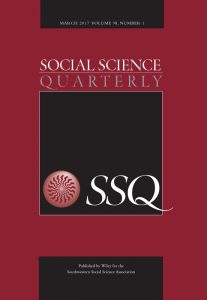Guest Post: What Makes Barbie Bad?
by Joel Best

Barbie, the teenage fashion doll, turns 50 this month. The years have been kind to Barbie; she hasn’t gained weight or lost her figure. Of course, her critics would say that’s the problem.
We’ve all heard the complaints by sociologists of gender and other intellectuals. Barbie, they say, is harmful–even dangerous–because she promotes traditional gender roles. Her beauty teaches little girls that society will judge them primarily according to their looks, and not their accomplishments. Her extensive wardrobe, her sports car, and her beach house promote a superficial lifestyle based the acquisition of consumer goods. And her tiny waist and big breasts can be blamed for causing girls to grow up dissatisfied with their bodies; according to her critics. Barbie is the root cause of eating disorders and the rise in cosmetic surgery.
These criticisms seem so familiar that it is surprising to realize that they only emerged in the late 1970s, with the flowering of the women’s movement. When she was younger, Barbie was subjected to very different attacks.
Prior to Barbie’s appearance, dolls depicted infants or very young children; doll play allowed girls to imagine themselves as nurturing mothers. What shocked Barbie’s earliest sociological critics was not so much that she was stacked, as that she was a teenager–much older than other dolls. Donald W. Ball, writing in The Sociological Quarterly in 1967, worried that Barbie “may serve to integrate children prematurely into the adolescent subculture and minimize preparation for later adult performances such as those associated with conjugal, parental, and occupational status or position.” A year later, Charles Winick’s book, The New People, warned that Barbie would make girls “less able to achieve the emotional preparation for being a wife and mother that they received from baby dolls.”
Poor Barbie has never been able to win. First they complained she threatened traditional gender roles–those same roles they now blame her for promoting. Perhaps what Barbie’s critics really reveal is the Old Double Standard–whatever a doll does, she can be attacked for it.
Joel Best received his M.A. and Ph.D. (1971) degrees in sociology from the University of California, Berkeley, and a M.A. degree in history from the University of Minnesota. He is a Professor of Sociology and Criminal Justice at the University of Delaware. His most recent books are: Stat-Spotting: A Field Guide to Identifying Dubious Data (2008) and Social Problems (2008). He is the Editor-in-Chief of Sociology Compass.



1468-0491/asset/society_affiliation_image.gif?v=1&s=859caf337f44d9bf73120debe8a7ad67751a0209)

Barbie continues to be a genius toy, especially since girls like to imagine themselves grown up and Barbie helps them do that